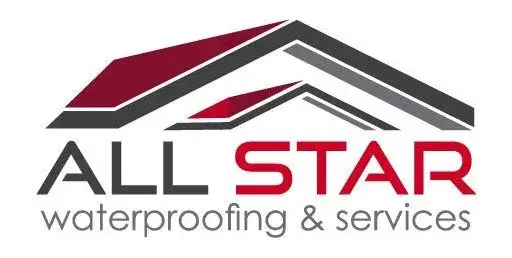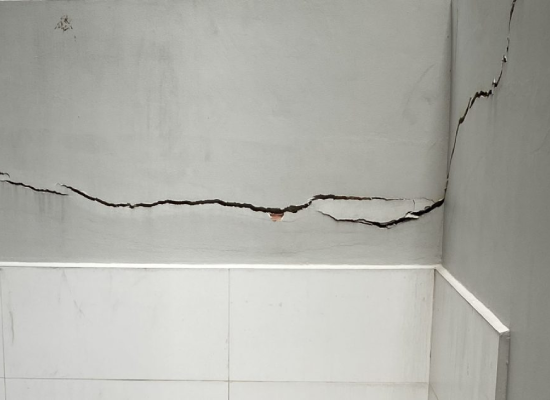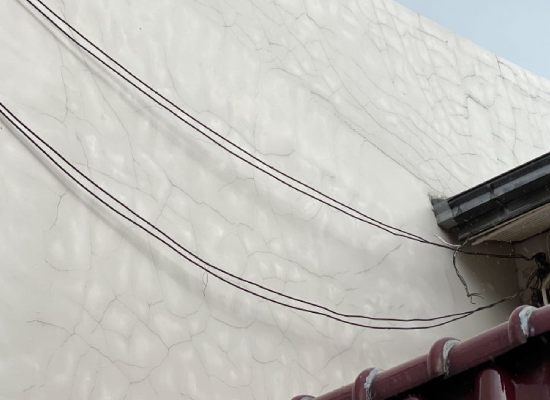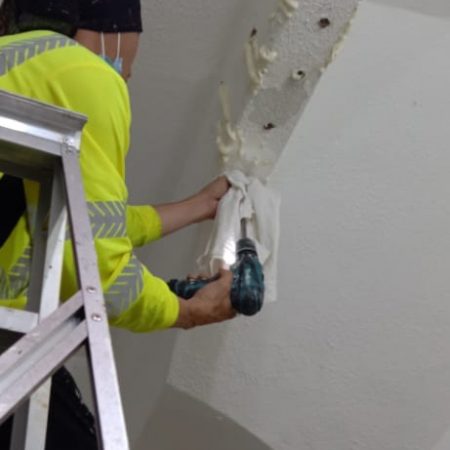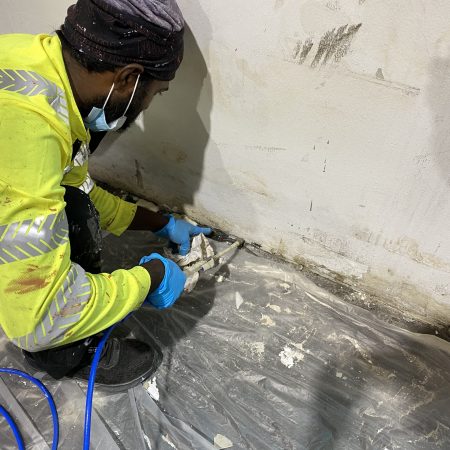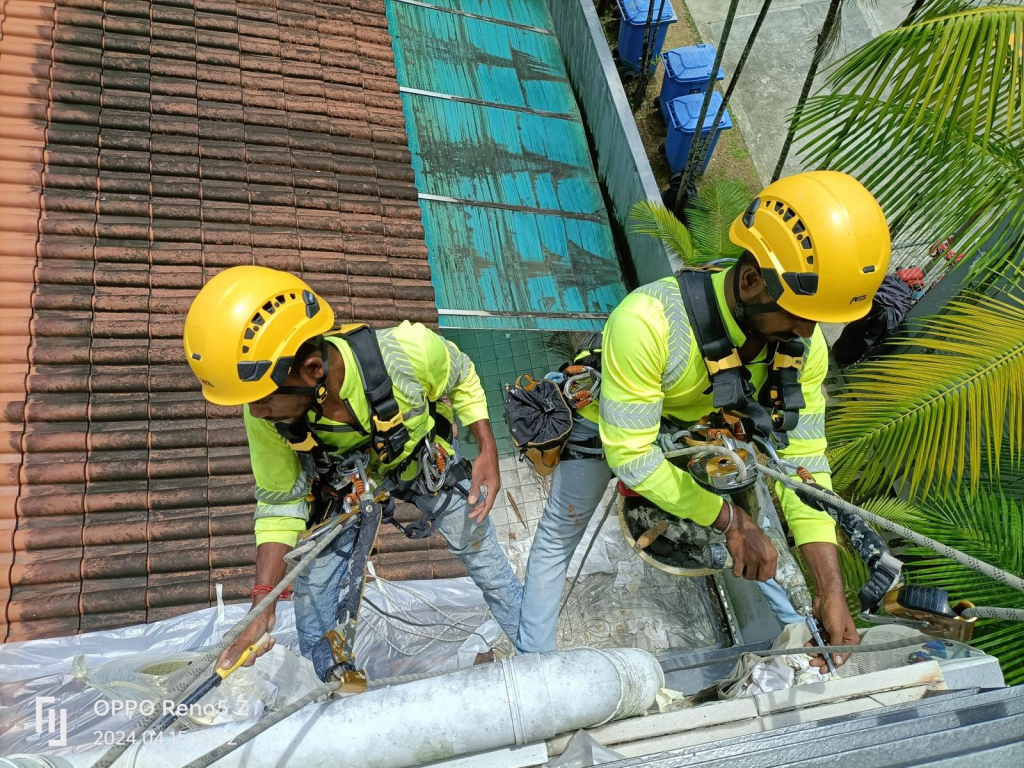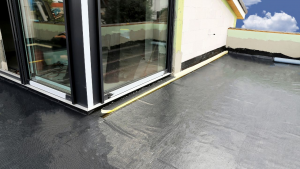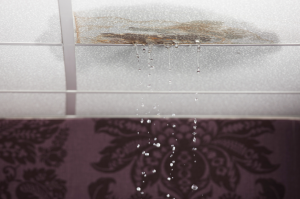Concrete walls are prone to cracks due to various reasons, ranging from temperature changes, water leaks, poorly poured concrete slabs, ongoing movement underground, and other external factors.
These cracks, ranging from hairline fractures to wide crevices, can result from factors such as shrinkage, settling, or structural movement and pose risks to the structural integrity of your space.
Over time, many more of these damage occur – ruining the beauty of your walls and weakning the structure.
Recognising the signs of structural damage is crucial to addressing these issues effectively and preventing further deterioration.
Let’s delve into the different types of cracks and explore how to identify, assess, and repair them to ensure the long-term durability of your concrete slabs.
What Are the Common Types of Structural Cracks?
Shrinkage Cracks
These wall cracks are thin, hairline cracks that occur during the concrete curing process as water evaporates. For a shrinkage crack, use a wire brush to clean the crack and fill it with a crack filler or cement.
Vertical Cracks
Vertical cracks often indicate settling or structural movement, especially in foundation walls. Diagnose the underlying cause of the movement, such as poor soil conditions or poor foundation wall settlement. Seal the crack with adhesive or cement to prevent further water infiltration.
Horizontal Cracks
Horizontal cracks can result from lateral pressure, such as earth loading or poor soil conditions. Address the source of the pressure, such as poor drainage or soil compaction. Inject adhesive or cement into the crack to stabilise the structure.
Diagonal Cracks
A diagonal crack often indicates differential settlement or uneven soil settlement. Consult with a structural engineer to assess the extent of the settlement and address the underlying soil issues. Use epoxy or cement to fill and stabilise the crack.
Wide Cracks
Wide cracks pose a significant structural risk and require immediate attention. Clean the crack thoroughly and fill it with cement or epoxy. Consider reinforcing the repair with steel reinforcement if the crack is extensive.
Crack Repair Techniques You Can Try Today
Proper surface preparation is vital for ensuring effective crack repair and long-lasting durability. Begin by thoroughly cleaning the wall crack with a wire brush to eliminate debris and loose material. Prior to filling the crack, apply a bonding agent to the surface to enhance adhesion and ensure a strong bond.
The severity of the cracks will dictate the appropriate repair method:
Filling with Cement
This method is suitable for smaller cracks and involves filling the void with cement, which expands as it sets, creating a tight seal.
Injecting Epoxy
Epoxy injection is ideal for larger or more complex cracks. The epoxy resin is injected into the crack under pressure, penetrating deep into the void and bonding with the surrounding substrate to create a durable repair.
Specialised Crack Filler
There are various specialised crack fillers available on the market designed to address specific types of cracks and substrates. These products typically offer excellent adhesion and durability.
For more complex structural repairs, it is advisable to seek guidance from a professional engineer. Their expertise can ensure that the remediation process is effective and that the repaired structure maintains its integrity over time.
How to Prevent Cracks in Concrete Walls
While addressing existing structural cracks is crucial, implementing preventive measures can help mitigate future damage:
Early Intervention
Introducing repair cracks at the initial stages of crack formation can prevent them from expanding and causing further damage to the structure.
Proper Surface Preparation
During construction, it is essential to prepare surfaces properly to minimise the likelihood of cracks forming. This includes installing control joints in concrete structures to control shrinkage cracking and reduce the occurrence of cracks.
Addressing Poor Soil Conditions
Soil conditions can impact a structure’s stability. Addressing issues such as poor compaction, expansive soils, or inadequate bearing capacity can help prevent structural settlement and subsequent cracking.
Maintaining Adequate Drainage
Proper drainage is critical for preventing water accumulation around the foundation, which can lead to soil erosion and settlement. Ensure that gutters, downspouts, and grading are properly maintained to divert water away from the structure.
Regular Maintenance Inspections
Conducting routine inspections allows for the early detection of potential issues before they escalate into more significant problems. Addressing minor concerns promptly can help prevent costly repairs in the future.
By implementing these preventive measures and addressing existing cracks through proper repair techniques, property owners can effectively protect their structures from structural damage and ensure their long-term durability and stability.
Stop Cracks in Their Tracks with Allstar Waterproofing!
Ready to restore the integrity and appearance of your concrete surfaces? Explore our comprehensive concrete repair services today!
From non-structural crack repairs to complete restoration solutions, Allstar Waterproofing has you covered.
Contact us now to schedule a consultation and discover how our expert team can rejuvenate your concrete structures for long-lasting durability and aesthetics.
